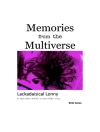En Jane Eyre encontramos una historia que ha trascendido los siglos y que se nos devuelve en cada lectura como fresca, subyugante y convincente. En esta novela se nos narra la vida de su protagonista, una huérfana que posee un singular temperamento y un carácter noble y abnegado, recogida por una tía poco cariñosa y después internada en la escuela Lowood. Al llegar a la adultez, la joven es contratada como institutriz en Thornfield Hall para educar a la protegida de su peculiar dueño, el señor Rochester. Entre ellos surgirá la pasión, pero la casa y la vida de Rochester guardan un estremecedor y terrible misterio. ¿Podrá el amor superar todos los obstáculos?
A propos de l’auteur
Charlotte Brontë fue una novelista inglesa que nació en Thornton (Yorkshire), Inglaterra, el 21 de abril de 1816 y falleció el 31 de marzo de 1855. Era la tercera de 5 hermanos: Emily, Anne, María, Elizabeth y Branwell. Publica en 1847, con el seudónimo de Curer Bell, Jane Eyre. Toda su vida estuvo marcada por momentos difíciles y por una profunda convicción religiosa, lo que también plasma en sus obras. Charlotte escribió junto a sus hermanas Anne y Emily, Poemas (1846), libro que firmaron con sus diferentes seudónimos. Otros de los textos de su autoría son Shirley (1846) y El profesor (1857), el cual se publicó dos años después de su muerte.












